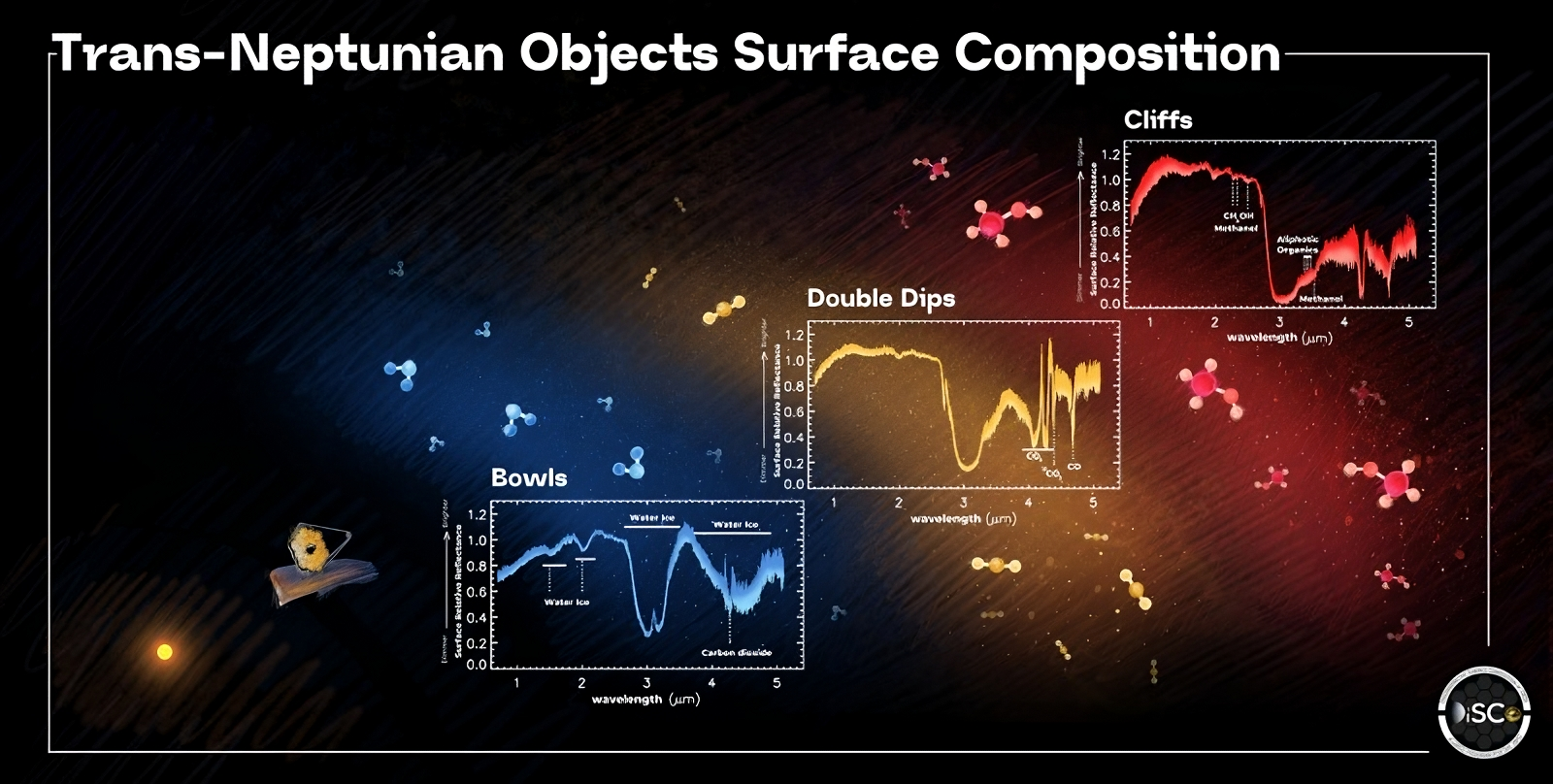Follow us on Google News (click on ☆)
Thanks to the spectroscopic capabilities of the James Webb Space Telescope (JWST), these studies reveal for the first time a molecular composition that tells us about the formation and early evolution of planetesimals in the protoplanetary disk.

Artist's representation of the distribution of trans-Neptunian objects in the planetesimal disk, with representative spectra superimposed for each composition group, highlighting the dominant molecules on their surfaces.
© Graphic illustration by William D. González Sierra for the Florida Space Institute, University of Central Florida.
TNOs, planetary bodies located beyond Neptune, are icy remnants of the early Solar System. Deflected into orbits closer to the Sun in the region of the giant planets, some become Centaurs, precursors to Jupiter-family comets.
The DiSCo study distinguishes three groups of TNOs based on their surface composition, linked to the "ice retention lines" of the protoplanetary disk. Outer TNOs, such as "cold classicals," contain a lot of methanol and organic compounds, while those formed near the giant planets exhibit water ice and silicates.
TNOs formed in intermediate regions are rich in carbon dioxide. These results establish for the first time a direct correlation between the chemistry of planetesimals and their origin in the protoplanetary disk.
Centaurs show distinct spectral signatures from their trans-Neptunian precursors. As they approach the Sun, their surface is altered by thermal processes.
The studies thus reveal the key role of dynamic and thermal evolution in the current structuring of icy small bodies. They open a new window into the genesis of planetesimals and enrich our understanding of the chemical and dynamic architecture of the early Solar System.
References:
Pinilla-Alonso, N., Brunetto, R., De Prá, M.N. et al. A JWST/DiSCo-TNOs portrait of the primordial Solar System through its trans-Neptunian objects. Nat Astron (2024).
Licandro, J., Pinilla-Alonso, N., Holler, B.J. et al. Thermal evolution of trans-Neptunian objects through observations of Centaurs with JWST. Nat Astron (2024).